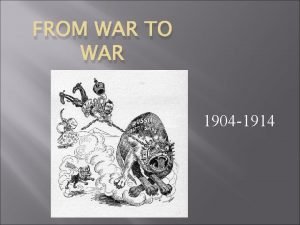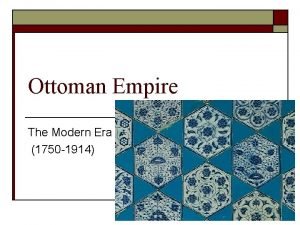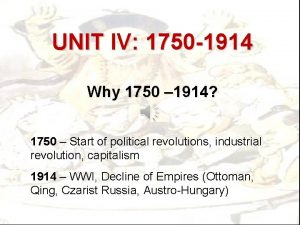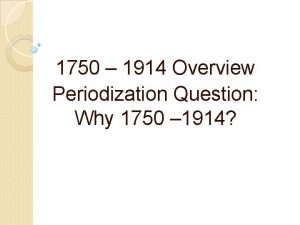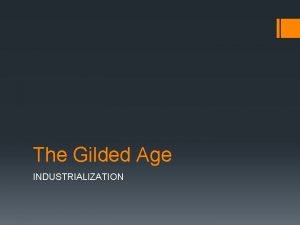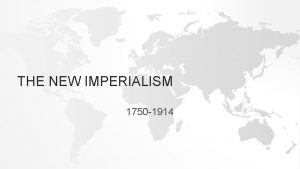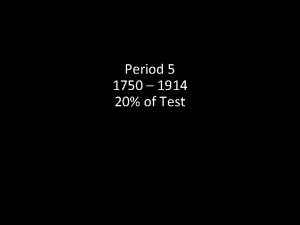Industrialization in the U S 1750 1914 AP











- Slides: 11

Industrialization in the U. S. 1750 - 1914 AP WORLD HISTORY CHAPTER 18

American Industrialization �Began in textile industry in New England in 1820 s Grew tremendously following the Civil War �Factors that led to the U. S. becoming a leading industrial power by 1914: Country’s large size Ready availability of natural resources Growing domestic market Political stability

The Industrial United States in 1900

The Role of U. S. Government �Supported industrialization with: Tax breaks for businesses Little regulation of industry Grants of public land to railroad companies Laws that allowed easy formation of companies

Pioneering Mass Production �The U. S. pioneered several new techniques regarding mass production: Interchangeable parts Assembly lines “Scientific management” �Henry Ford = famously brought these techniques to the automobile industry in the early 1900 s

Self-Made American Industrialists Henry Ford (Automobiles) John D. Rockefeller (Oil) Andrew Carnegie (Steel)

Culture of Consumption �Growth of advertising agencies Ex: Sears Roebuck and Montgomery Ward Used mail-order catalogs regularly �Growth of urban department stores Sears Roebuck Catalog from 1902

Social Divisions in the U. S. �Similar to those in European societies during industrialization �Widening gap between the classes Many in the middle class getting richer and richer The poor are getting poorer �Opposing views on these social divisions: A betrayal of American ideals Natural outcome of competition Social Darwinism = survival of the fittest in society

Protest from the Working Class �As in Europe, horrible working conditions led to labor protests Formation of unions; strikes; occasional violence �Unlike many European countries no political party emerged in the U. S. to represent the working class No major socialist movement in the U. S. Ideas of Karl Marx and socialism did not take hold Socialism came to be identified as “un. American” in a country that valued individualism and feared “big government”

No Socialism? Why Not? �Labor unions more conservative not as radical, didn’t align with political parties, etc. �Immense religious, ethnic, and racial divisions in the U. S. prevented solidarity of the workers �Economic growth of the U. S. created an overall higher standard of living nation-wide than in most parts of Europe Workers had more opportunities in the U. S. than in Europe = drew them away from socialist ideas

Some Political Opposition to Industrialization �Populist Party = organized by small farmers Protested against banks, industrialists, monopolies, the existing money system, and corrupt political parties �Progressive Party = in the early 1900 s Pushed for specific reforms wages & hours laws, better sanitation standards, antitrust laws, more government intervention in the economy

